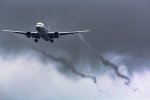Took the ASTB for the first time and got a 59 7/8/8. Honestly, I’m stoked about my score since it was my first time taking the test and fully credit my score to this thread.
I spent just under 6 weeks studying and would highly recommend reading through this entire thread, doing the cram set, and mastering the UAV simulator. The hardest part of the exam for me was the reading section (it was hard to focus since the material was so dry).
Truly the only recommendation I have is to study. Why aim for just a passing score when you can do better with just a few weeks of effort?
Best of luck to everyone! Here’s hoping COVID doesn’t mess with the June boards.
I spent just under 6 weeks studying and would highly recommend reading through this entire thread, doing the cram set, and mastering the UAV simulator. The hardest part of the exam for me was the reading section (it was hard to focus since the material was so dry).
Truly the only recommendation I have is to study. Why aim for just a passing score when you can do better with just a few weeks of effort?
Best of luck to everyone! Here’s hoping COVID doesn’t mess with the June boards.


 Read books with fewer pictures. Google and review “GRE reading comprehension tips and tricks.” Review the Barron’s book. That’s about it… Honestly, didn’t spend much time studying for the reading section.
Read books with fewer pictures. Google and review “GRE reading comprehension tips and tricks.” Review the Barron’s book. That’s about it… Honestly, didn’t spend much time studying for the reading section.